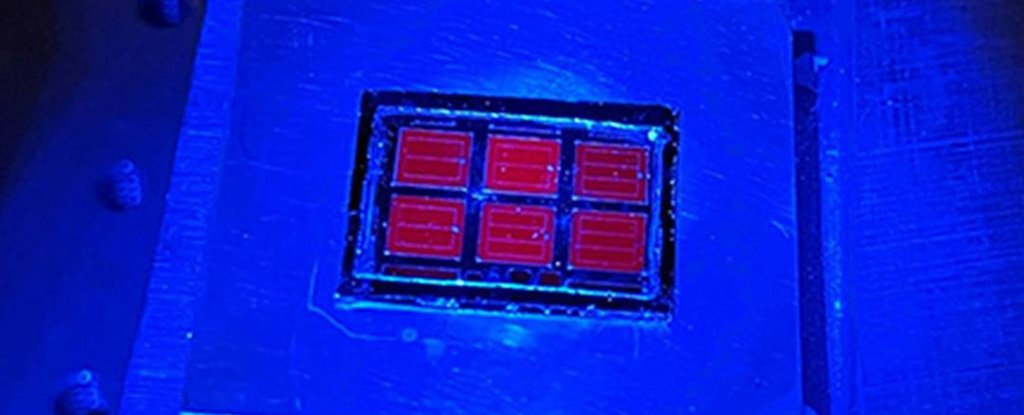Products You May Like
Scientists keep on pushing the efficiency of solar panels higher and higher, and there’s a new record to report: a new solar cell has hit 39.5 percent efficiency under the standard 1-sun global illumination conditions.
That 1-sun marker is simply a standardized way of measuring a fixed amount of sunlight, and almost 40 percent of that radiation can now be converted into electricity. The previous record for this type of solar panel material was 39.2 percent efficiency.
There are more types of solar cells around than you might have realized. The type used here, triple-junction III-V tandem solar cells, are often deployed in satellites and space vehicles, though they have plenty of potential here on solid ground as well.
“The new cell is more efficient and has a simpler design that may be useful for a variety of new applications, such as highly area-constrained applications or low-radiation space applications,” says physicist Myles Steiner, from the National Renewable Energy Laboratory (NREL) in Colorado.
The ‘triple-junction’ part of the equation is important in terms of the efficiency of the solar cell. Each junction concentrates on a particular part of the solar spectrum range, meaning that less light is lost and left unused.
Further efficiency gains were made through the use of so-called ‘quantum well’ technologies. The physics behind them is quite complex, but the general idea is that the materials are carefully chosen and optimized, and made as thin as possible. This affects the bandgap, the minimum amount of energy required to excite electrons and get the current flowing.
In this case, the three junctions are made up of gallium indium phosphide (GaInP), gallium arsenide (GaAs) with some extra quantum well efficiencies added, and gallium indium arsenide (GaInAs).
“A key element is that while GaAs is an excellent material and generally used in III-V multijunction cells, it does not have quite the correct bandgap for a three-junction cell, meaning that the balance of photocurrents between the three cells is not optimal,” says physicist Ryan France from the NREL.
“Here, we have modified the bandgap while maintaining excellent material quality by using quantum wells, which enables this device and potentially other applications.”
Some of the improvements added in this latest cell include an increase in the amount of light absorbed without any corresponding voltage loss. Several other technical tweaks were also made to minimize limitations.
It’s the highest 1-sun efficiency of any solar panel cell ever recorded, though we’ve seen higher from more intense solar radiation. While it takes time for technologies to make their way from the lab into actual products, the potential improvements are exciting.
The cells also recorded an impressive 34.2 percent space efficiency, which is what they should achieve when put to use in orbit. Their weight and resistance to high-energy particles make them particularly suited for this task.
“As these are the highest efficiency 1-sun solar cells as of this writing, these cells also set a new standard for achievable efficiency across all photovoltaic technologies,” write the researchers in their published paper.
The research has been published in Joule.
